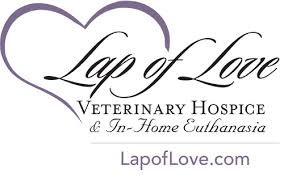
End of Life Support
What is Veterinary Hospice?
Veterinary Hospice is a family-centered, medically supervised, and team-oriented service dedicated to maintaining comfort and quality of life for the terminally ill or geriatric pet until natural death occurs or the family elects euthanasia.
Modeled originally from human hospice, this specific type of veterinary care is focused on the comfort of your cat, not at finding a cure for his or her disease. It is important to note that veterinary hospice does not include any diagnostic or blood-work services. The goal is to focus on comfort and maintaining the human-animal bond.
Comfort Beyond A Cure
Hearing those dreaded words “nothing else can be done” does not mean that euthanasia is the only option you have left. Veterinary hospice care is a unique approach to your cat’s end-of-life needs, one that focuses specifically on managing symptoms and maintaining happiness for as long as possible.
Why choose Veterinary Hospice care?
You may have already received the diagnosis of a terminal illness from your family veterinarian, or you may be managing advanced age in your cat. You may also simply need to buy some time before your spouse, child, or other family/friend has a chance to say goodbye.
Whatever the case may be, there is always something more a veterinarian trained in hospice care can do to help ease the process of death and dying. Pain meditations and proper instructions on how to use them along with a specific and powerful symptom management protocol are essential to everyone’s peace of mind.
Veterinary hospice is not about extending suffering, but rather preventing suffering from occurring at all.
You need to know what to expect in those last few weeks, days, and hours in order to make the best decision for you, your pet, and your family. Although hospice veterinarian cannot know for sure, they will use their medical knowledge to help you make those decisions. They will assist you in implementing a plan that will meet your cat’s needs and respect your family’s wishes.
Veterinary hospice care may include, but is not limited to:
- Education about the end-stage disease process
- Pain recognition and treatment
- Subcutaneous fluids
- Supplementary nutrition
- Management of incontinence
- Bandage and wound care
There are many things that can be done at home to help your cat be more comfortable in the end-of-life stages. Your hospice care professional also encourages you to talk with your regular veterinarian about additional comfort-oriented care.
Many families also find it helpful to speak with others that have been through this difficult process. You may visit Lap of Love’s Facebook page to read posts and view stories from other families or contact Lisa with All About Purrs. She has been through the process with many clients and with her own kitties.
Cat Quality of Life
By now you have probably heard the term “quality of life” spoken by your regular veterinarian or others close to you. This can be very subjective terminology and is highly dependent on the disease process your cat is experiencing, your cat’s personality, and your personal beliefs.
Just like humans, every cat will experience and react to changes in their body differently. This is also highly dependent on the disease process at hand, which is why in-depth discussions with your regular veterinarian are so important. For example, the decision to euthanize a cat with congestive heart failure will need to be made before painful symptoms (such as difficulty breathing) arise. Alternatively, an older cat with arthritis can be maintained at home with adequate pain management for an extended amount of time. It’s important to understand the disease process your cat is experiencing in order to properly evaluate the quality of life.
The handouts in the Education – Common Diseases section of Lap of Love’s website have more information on specific changes you should be looking for with specific medical conditions.
Having trouble assessing the quality of life for your own cat? Watch this video…
Quality of Life Scoring Tools
Concerned about your pet’s quality of life? There is not one simple and correct way to evaluate your cat’s quality of life. It’s also not as simple as saying ‘when he stops eating’ or ‘you’ll just know’. Below are a variety of tools to help you and the cat’s entire family evaluate quality of life.
The following two Pet Quality of Life Scales have been developed by Lap of Love co-Founders Dr. Gardner and McVety, each with a different way to evaluate quality of life and address concerns for the family. Print these PDF’s, keep them in plain sight and have multiple people in the family use them daily or weekly.
- Dr. McVety’s Pet Quality of Life Scale: “Pet Quality of Life Scale and Daily Diary ~ Dr. McVety”
- Pet Quality of Life Calendar
For a more intensive, disease-based evaluation of quality of life, visit Lap of Love’s interactive web-based Quality of Life tool: www.PetHospiceJournal.com


